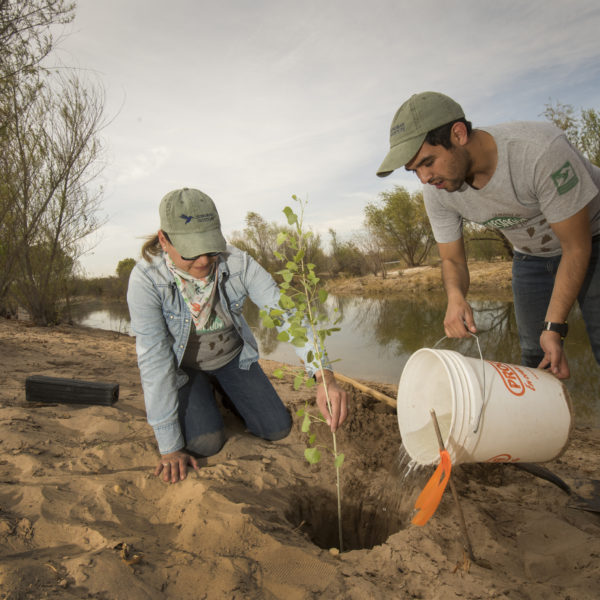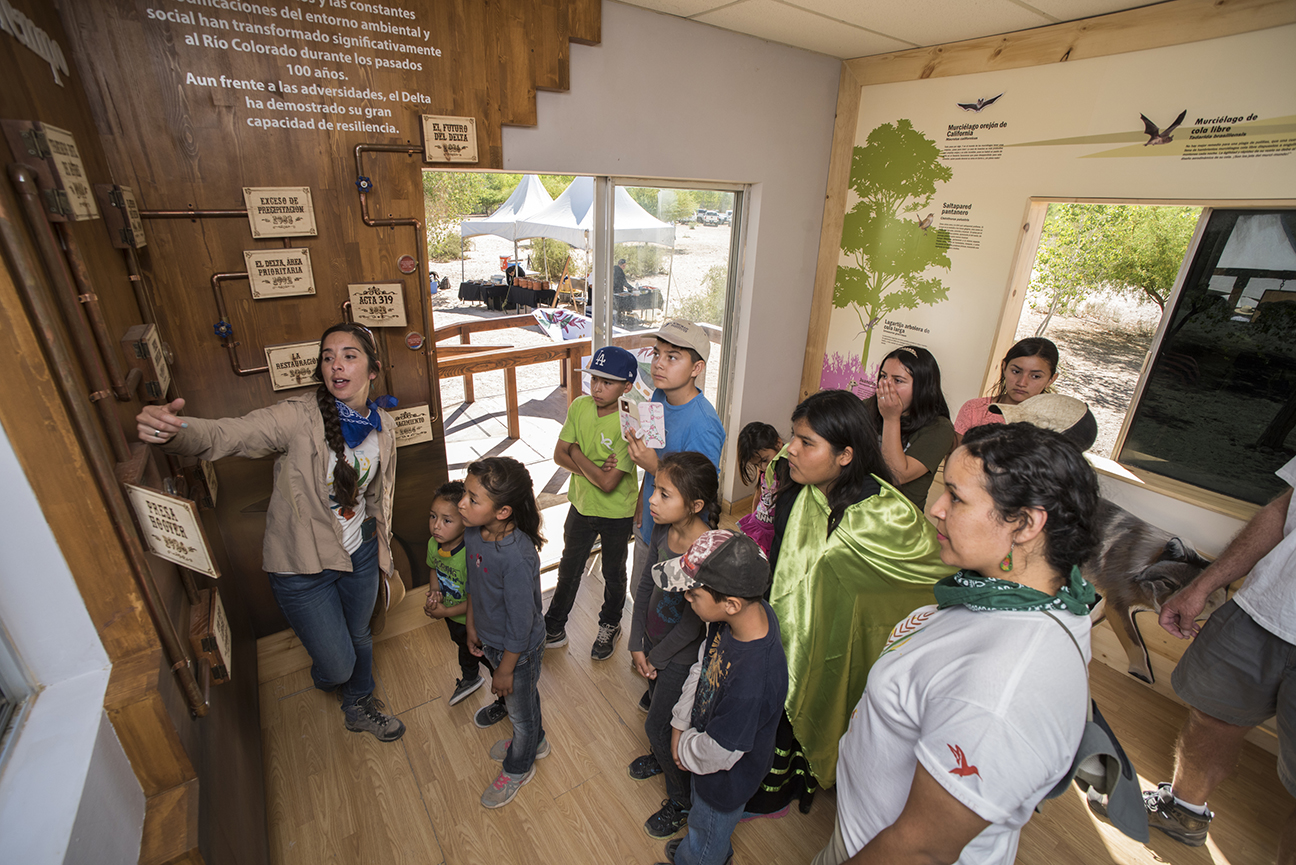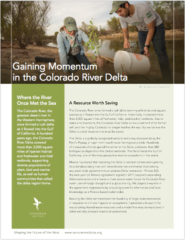A Resource Worth Saving
The Colorado River once formed a lush delta teeming with birds and aquatic species as it flowed into the Gulf of California. Historically, it covered more than 3,000 square miles of freshwater, tidal, and brackish wetlands. Due to dams and diversions, the Colorado River Delta is now a remnant of its former self. But we believe the Delta is a vital resource that must be saved.

The Delta is a globally recognized wetland and a key stopover along the Pacific Flyway, a major north-south route for migratory birds. Hundreds of thousands of birds spend the winter in the Delta, and more than 380 bird species depend on the Delta’s wetlands. The Delta feeds the Gulf of California, one of the most productive marine ecosystems in the world.
Reviving the Delta demonstrates the feasibility of large-scale restoration in response to climate impacts on ecosystems. It provides a blueprint for resuscitating shared water resources and a model that may be replicated in other similarly stressed binational watersheds.
A Track-Record of Success
For over 20 years, Sonoran Institute and partners have been working in the Colorado River Delta to renew, restore, and reconnect its diverse ecosystems for the benefit of wildlife and people. Our work extends along the main channel of the river, from the US-Mexico border to the upper estuary of the Gulf of California, and includes a key tributary (Rio Hardy). We know that it is not feasible to restore the entire Delta. But after years of study and as a result of the progress we have already made, we developed a long-term goal to restore and protect 30,000 acres of habitat.
Mexico has stated that restoring the Delta is national conservation priority. Minute 323, the nine-year US-Mexico agreement signed in 2017, supports expanding Delta restoration and ensures a more secure water future for Colorado River water users. We played a key role in negotiations by providing scientific information and local knowledge as a Mexico-based stakeholder.

Ambitious Five-Year Goals

We have received a tremendous vote of confidence from water users across the Colorado River Basin with the signing of Minute 323, and with this new agreement the challenge we face is in scaling up our efforts—to expand restoration along the riparian corridor as well as the estuary and surrounding wetlands, and to inspire and connect more communities with this natural resource.
Riparian Restoration
We are creating a network of riparian restoration sites along the main channel that will sustain biodiversity and facilitate connectivity of river flows to the estuary. By the end of 2018, Sonoran Institute and our partners will have restored a total of 1,100 acres of riparian habitat, 700 of which were restored by Sonoran Institute. Over the next five years, we will collectively restore an additional 1,300 acres of riparian habitat, with Sonoran Institute contributing 433 acres of new habitat.

Estuarine Restoration
Lack of flows and increased sedimentation have contributed to the loss of connectivity between the river and its estuary. Sonoran Institute is re-establishing hydrological connectivity, having dredged 10.4 kilometers of the river-tidal channel, resulting in 172 days of freshwater-seawater connectivity in 2018, up from just 12 days in 2012. In the next five years, we will dredge an additional 20.4 kilometers of channel with the goal of connecting the river and sea for an average 220 days a year. Our efforts will result in improved tidal-freshwater exchange, improved water quality, increased habitat for water birds, and more spawning and nursing habitat for marine species, which could result in benefits to local fishermen.

Community Outreach
More than one million people live in the Colorado River Delta. Sonoran Institute and our partners ensure that communities have a strong role in, and benefit from, restoration. To date, we have engaged nearly 18,000 people through volunteer opportunities, environmental education, and direct employment. Five years from now, we will have engaged an additional 50,000 people, providing local school children and families, as well as volunteers from around the world, with a chance to reconnect with the Delta. Additionally, we will assess community development opportunities around tourism and visitation and complete a state-level management plan to establish a community nature park.
Our Laguna Grande Interpretive Center welcomes groups of students during the school year, and hosts the popular Sábados Familiares (Family Saturday) events in the fall and spring. The Interpretive Center has exhibits and information to orient visitors to the river’s history and ecology and restoration activities.
Measuring Success
To date, we have focused on demonstrating the feasibility of restoration with clear goals measuring our progress primarily around acres restored and water delivered. Assessing the longer-term value of our work depends on measuring its ecological and social impact. With the help of scientists in the US and Mexico, we have been developing and testing monitoring protocols to track improvements in vegetation cover, bird diversity and abundance, and hydrological conditions. We also are developing a set of indicators to measure social and economic benefits.

















